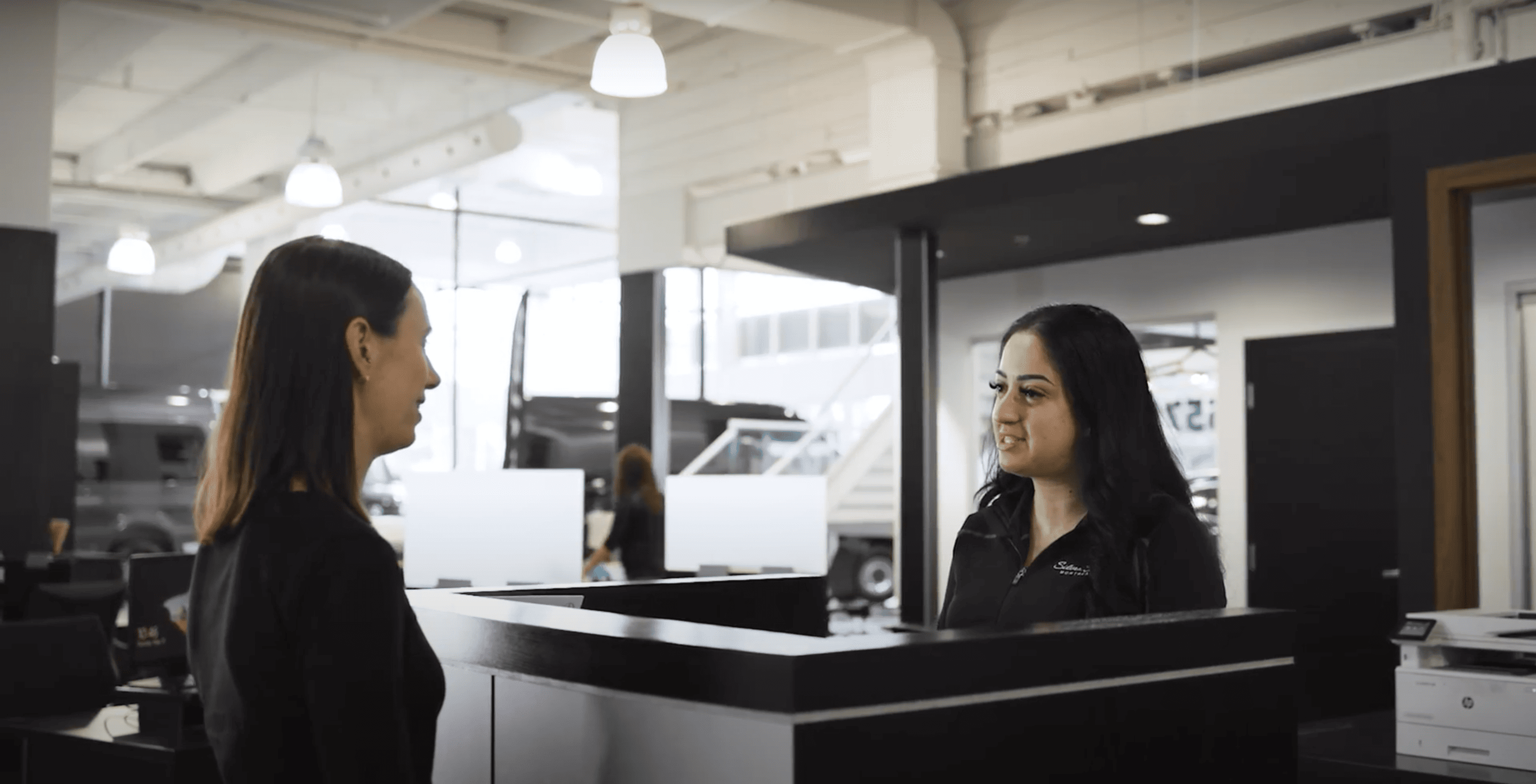How To Turn Declined Service to Revenue Opportunities for Your Dealership
You present a repair estimate, the customer reviews the details, pauses, and says two words: "No thanks."
This isn't a rare interaction. It happens daily across America. Each declined service isn't just lost revenue, it signals a breakdown in trust happening right before your eyes.
In 2023, dealerships captured just 30% of all service visits, down from 35% in 2021, with general repair shops now the preferred choice for the first time ever. 33% versus 31% for dealerships. This is costing franchise dealerships approximately $266 billion annually, translating to about $15.9 million per dealer.
Yet, every decline is an opportunity. If you understand why customers say "no" and what you can do differently, you can turn declined service into revenue.
Reasons for Declined Services
Understanding the reasons behind customer rejection helps us target solutions effectively. Here's why customers are turning away from dealership services.

Lack of Trust
Something significant has shifted in recent years.
Only 54% of customers returning to their purchasing dealership cited trust as a reason in 2023, down from 62% in 2021.
These customers initially trusted their dealership when purchasing their vehicles, yet trust decline during routine maintenance interactions.
And two out of three U.S. drivers don't trust auto repair shops, suspecting unnecessary recommendations, fearing overcharges, and experiencing a lack of transparency.
Cost Concerns
Four of the top five reasons customers avoid dealership service relate directly to cost. Service prices have jumped 45% since 2021 and it's significantly influencing customer decisions.
Interestingly, average dealership service costs ($258) closely match non-dealer providers ($249), but customer perceptions remain skewed. People anchor prices to past, lower costs and thus perceive current prices as inflated. A $500 repair seems expensive alone but becomes reasonable compared to vehicle replacement costs. It's a reminder of how context shapes perception.
Customer Frustration
Nearly half (48%) of drivers report frustration from recent dealership visits. Long wait times and perceived unnecessary upselling are their primary annoyances.
Wait times disrupt customers' schedules and raise their anxiety. Additionally, upselling can often feel manipulative, exacerbating existing customer anxieties about repair costs. It only reinforces the negative dealership stereotypes that we are all trying to destroy.
Preference for Independent Shops
Only 29% of service visits for vehicles older than five years happen at dealerships. And, 70% of customers who purchased or leased vehicles didn't return for dealership servicing within the following year. That means you're only generating your fixed ops revenue from 30% of your customers. Imagine if you could improve your dealership customer retention and capture the other 70%.
Independent shops provide not just cost advantages but psychological comfort. They seem less corporate, more approachable, and more personal. Local mechanics specializing in routine, high-volume jobs like oil changes create frequent positive touchpoints that create long-term loyalty.
Strategies to Convert Declined Services
Your dealerships have ways to win back these lost opportunities. These strategies focus on trust-building rather than price manipulation.

Improve Communication
Clear communication transforms the customer experience during service visits. Video and photo documentation reduce resistance by showing rather than telling.
Customers see worn brake pads instead of hearing mysterious descriptions about "metal-on-metal contact." It improves approval rates significantly. Customers make decisions more easily when they understand the problem rather than trusting someone else's judgment.
Text messaging addresses communication preferences most customers didn't know they had. 89% of consumers want to use text messaging with businesses. Seventy-eight percent say receiving a text is the fastest way to reach them for important updates. Phone calls feel intrusive. Emails get buried. Text messages feel personal and immediate without being overwhelming. Customers respond when convenient rather than feeling pressured during live conversations.
Digital estimates remove the pressure element that makes many customers uncomfortable. They can review line-item options privately, discuss with family members, and make decisions without feeling rushed by waiting service advisors.
Build Value, Not Discounts
The old approach of immediately offering discounts creates psychological traps. It signals that initial prices were inflated. It trains customers to expect discounts.
Smart dealerships turn the conversations to value creation. Original manufacturer parts provide reliability advantages over aftermarket alternatives. Dealership technicians receive factory training and have access to technical support that independent shops may not have.
These advantages matter. But value propositions only work when they're clearly communicated. Customers need to understand why they're paying your rates and what they're getting in return.
Financing options are also a way to improve how large repair bills are perceived. A $2,000 transmission repair feels overwhelming as a lump sum. But that same repair becomes manageable at $85 a month.
Systematic Follow-Up
Most dealerships are bad at follow-up because they rely on their service advisor memory. They intend to call customers back, but priorities shift and urgent issues arise.
That declined brake job from two weeks ago? Forgotten, until the customer's brakes fail.
With the right dealership tools, follow-ups are easy and create consistent touchpoints that feel helpful rather than sales-focused. Text reminders keep maintenance at the top of mind for your customers without feeling pushy.
And timing and relevance determine success of your follow-ups. A brake pad reminder sent three months after the initial decline feels helpful. That same reminder sent three days later feels like pressure.
How Kimoby Turns Declined Services into Revenue
Kimoby is more than just a communication tool. It's a full Dealership Engagement System (DES)™. Unlike legacy DMS platforms that focus on internal operations, a DES is designed to improve the way your dealership engages customers across service, parts, and loaner departments.
A DES integrates with your DMS to bridge the gap. It transforms every point of contact into a trust-building, loyalty-driving moment. Kimoby takes care of the real psychological barriers.
Lack of trust, cost concerns, and customer frustration that cause customers to decline services, through features like:
- Video & photo inspections and digital estimates to build trust: Show customers what's wrong with their car using short videos or pictures, and send clear, accurate repair estimates via text that customers can review and approve with a tap. This transparency directly addresses customer skepticism and fears of overcharging.
- Mobile payments & financing options to alleviate cost concerns: Let customers pay by text, which is fast and easy. Plus offer financing options that your customers can choose in the comfort of their own home, making large repair bills more manageable.
- Text messaging & automation for enhanced communication and follow-up: Quickly send texts for service updates, reminders, campaigns, or repair approvals. This proactive, convenient communication reduces frustration and ensures no opportunity is lost through forgotten follow-ups.
- Loaner car management for improved customer experience: Track who has a loaner car and when it's coming back, with no messy paperwork, minimizing wait times and inconvenience.
- Online reviews & CSI monitoring to maintain trust and satisfaction: Automatically ask for reviews and keep an eye on your customer satisfaction index.
These features aren't just bells and whistles. They are proven ways to increase your fixed ops revenues. Here's what real-world results our customers have seen.
- Automated Revenue Recovery: Northwest Lexus generated up to $30,000 per campaign using Kimoby's SMS campaigns and automated reminders.
- Operational Efficiency: Policaro BMW recovered $688.75 in just one week through Kimoby's digital loaner vehicle management, significantly boosting fleet profitability.
- Flexible Financing: Elk Grove Subaru increased their average repair order size by 246% through Kimoby's Buy Now, Pay Later financing options, turning costly repairs into manageable payments.
Conclusion
Frequently Asked Questions
1. Why do customers decline recommended services at dealerships?
Customers often decline services due to perceived high costs, lack of trust, and previous negative experiences. A study by Cox Automotive revealed that four of the top five reasons for not returning to a dealership for service are cost-related. Additionally, nearly half of drivers reported frustration with their most recent dealership service visit, citing wait times and upselling as common issues.
2. How can we rebuild trust with our service customers?
Transparency is key. Using tools like video and photo inspections to visually demonstrate issues, allows customers to see exactly what needs attention. Clear, honest communication without aggressive upselling build trust and encourages repeat business.
3. What strategies can increase service retention rates?
-
Personalized Communication: Send tailored reminders and follow-ups.
-
Flexible Scheduling: Offer convenient appointment times.
-
Loyalty Programs: Implement rewards for repeat visits.
-
Feedback Mechanisms: Regularly solicit and act on customer feedback.
4. How does a Dealership Engagement System (DES)™ like Kimoby assist in customer retention?
Kimoby’s DES™ offers features such as automated text messaging, digital estimates, and mobile payments. These tools improve communication, making it easier for customers to approve services and stay engaged with the dealership.
5. What role does financing play in service approvals?
Offering financing options can significantly increase service approvals. For example, Elk Grove Subaru saw a 246% increase in average repair order size by providing Kimoby’s Buy Now, Pay Later (BNPL) financing option, making large repair bills more manageable for their customers.
You May Also Like
These Related Stories

Here's How to Increase Your Dealership's Average Repair Order

Kimoby and Volkswagen USA Partner to Modernize the Service Lane Experience



